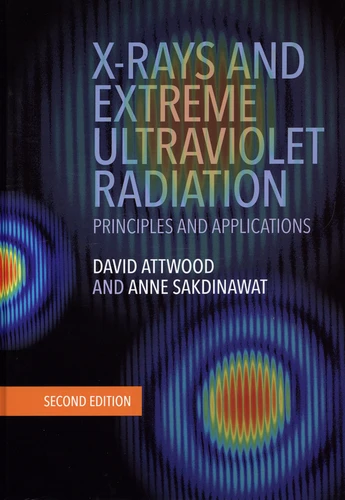X-Rays and Extreme Ultraviolet Radiation. Principles and Applications
2nd edition
Par : , Formats :
- Paiement en ligne :
- Livraison à domicile ou en point Mondial Relay indisponible
- Retrait Click and Collect en magasin gratuit
- Nombre de pages634
- PrésentationRelié
- FormatGrand Format
- Poids1.43 kg
- Dimensions18,2 cm × 25,4 cm × 3,6 cm
- ISBN978-1-107-06289-4
- EAN9781107062894
- Date de parution01/01/2016
- ÉditeurCambridge University Press
- IllustrateurLinda Geniesse
Résumé
With this fully updated second edition, you will gain a detailed understanding of the physics and applications of modern x-ray and extreme ultraviolet EUV radiation sources. Taking into account the most recent improvements in capabilities, coverage is expanded to include new chapters on free electron lasers (FELs), laser high harmonic generation (HHG), x-ray and EUV optics, and nanoscale imaging, a completely revised chapter on spatial and temporal coherence, and extensive discussion of the generation and applications of femtosecond and attosecond techniques.
You will be guided step by step throug h the mathematics of each topic, with over 300 figures, 50 reference tables, and 600 equations enabling easy understanding of key concepts. Homework problems, a solutions manual for instructors, and links to YouTube lectures accompany the book online.
You will be guided step by step throug h the mathematics of each topic, with over 300 figures, 50 reference tables, and 600 equations enabling easy understanding of key concepts. Homework problems, a solutions manual for instructors, and links to YouTube lectures accompany the book online.
With this fully updated second edition, you will gain a detailed understanding of the physics and applications of modern x-ray and extreme ultraviolet EUV radiation sources. Taking into account the most recent improvements in capabilities, coverage is expanded to include new chapters on free electron lasers (FELs), laser high harmonic generation (HHG), x-ray and EUV optics, and nanoscale imaging, a completely revised chapter on spatial and temporal coherence, and extensive discussion of the generation and applications of femtosecond and attosecond techniques.
You will be guided step by step throug h the mathematics of each topic, with over 300 figures, 50 reference tables, and 600 equations enabling easy understanding of key concepts. Homework problems, a solutions manual for instructors, and links to YouTube lectures accompany the book online.
You will be guided step by step throug h the mathematics of each topic, with over 300 figures, 50 reference tables, and 600 equations enabling easy understanding of key concepts. Homework problems, a solutions manual for instructors, and links to YouTube lectures accompany the book online.




